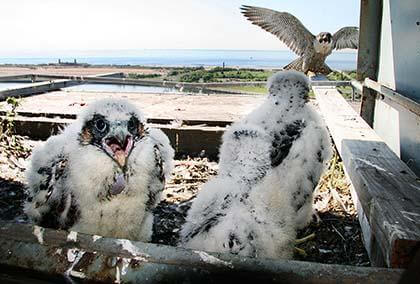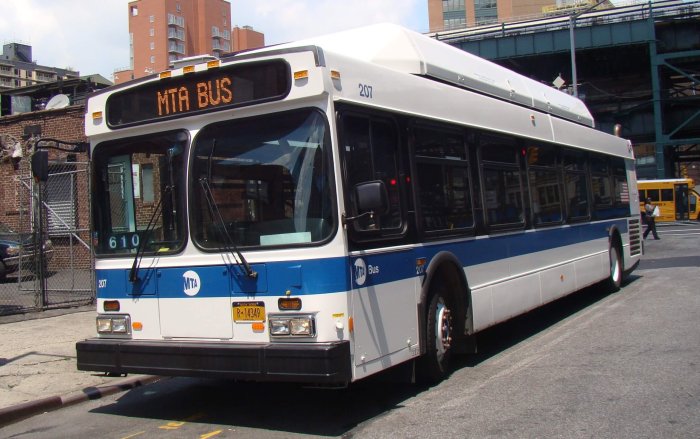By Philip Newman
That chorus of chirping high atop the Throgs Neck, Marine Parkway and Verrazano-Narrows bridges is a rite of spring, courtesy of nine new peregrine falcons.
The MTA’s Bridges and Tunnels agency said three males were hatched at the top of the 360-foot Bronx tower of the Throgs Neck, four chicks were born inside a World War II-era gun turret 215 feet up on the Rockaway tower of the Marine Parkway-Gil Hodges Memorial Bridge and two females were born atop the 693-foot Brooklyn tower of the Verrazano-Narrows Bridge.
The males on the Throgs Neck were named Locust, Edgewater and Bayside by Throgs Neck workers in honor of the Bronx and Queens communities.
The four chicks of the Marine Parkway bridge were named Rocky for the Rockaways, Floyd for nearby Floyd Bennett Field, Marine for the bridge and Breezy for Breezy Point.
The two females on the Verrazano-Narrows were named Rose in honor of Staten Island’s Rosebank neighborhood and Sunset for the neighborhood in Brooklyn.
“It doesn’t cost the authority anything to have the falcons nest here,” said Throgs Neck Maintenance Superintendent Carlton Cyrus. “We just give them some peace and quiet and during nesting season make sure that our contractors and maintenance workers don’t disturb them. This allows the chicks to hatch and gives them a greater opportunity for survival.”
Cyrus, who has been with Bridges and Tunnels nearly 27 years, has overseen the nesting of falcons on the Verrazano-Narrows, Marine Parkway and Throgs Neck bridges since 1997. Urban falcons seek out bridges, church steeples and high-rise buildings for nesting since they offer excellent vantage points for hunting prey, including pigeons and small birds.
The falcon chicks on the three bridges were born around the first week in May. Banding begins three weeks later when the chicks’ talons are adult-size. Each chick gets an identification band for monitoring by federal wildlife officials.
Chris Nadareski, a wildlife specialist with the city Department of Environmental Protection Wildlife Studies Division, conducts the banding of the chicks.
Nadareski estimated that 16 pairs of the falcons live in New York City.
Peregrine falcons were almost wiped out in the 1960s because of pesticides that contaminated their food supply and they remain on the state Department of Environmental Conservation’s endangered birds list.
The peregrine nesting program began in 1983 with the Verrazano-Narrows and Throgs Neck bridges.
Peregrine falcons mate for life and nest in the same place each year.
Reach contributing writer Philip Newman by e-mail at timesledgernews@cnglocal.com or phone at 718-260-4536.



































